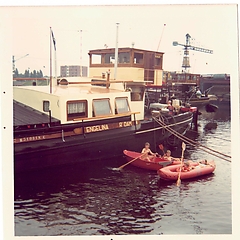Forging is the process of working and shaping pure metals. These metals are heated in a fire and worked with differently shaped hand forge hammers on a hard surface, the anvil. A blacksmith must be able to manage the fire well and see to it that it keeps burning, without smoke. He does this by taking care of the right air supply and adding coal in time. Embers and slag (the waste of the coal) must also be regularly removed from the fire with a hook. A good blacksmith carefully handles his anvil, not to dent it or cut off pieces. He puts the material to be forged between the anvil and the forge hammer. Because the material has been plasticised, it can easily be shaped into the required form with the hammer. A blacksmith uses several tools, one of the most important of which is the hand forge hammer. It is often the personal property of a smith, because it has been shaped to his hand over the years. Tools like fullers (for in the anvil) and pliers are often made by the blacksmith himself. The forging process can be divided into hand hammer forging with a hand hammer and mechanical forging with a pneumatic hammer. That is a machine with an electrically powered top fuller (hammer) and bottom fuller (anvil).



